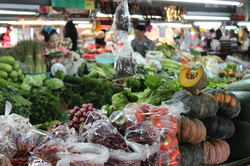 Journalist Mark Kurlansky wrote "Food is a central activity of mankind and one of the single most significant trademarks of a culture." As an avid traveler and someone who loves to cook I agree whole-heartedly with this statement. Food provides a tasty and thought provoking peek into another culture. It can influence language - the significance of rice in Japanese culture influenced the words and Chinese characters used for different meals - breakfast, lunch and supper are called 朝食 (morning rice), 昼食 (noon rice) and 夕食 (evening rice). Food also reflects social norms and religious beliefs - while dog meat is taboo in the United States where dogs are treated by some as family members it is an ingredient in a popular summer soup in Korea. Due to the strong influence of Hinduism on social norms and culture in India it is illegal to sell beef in some states and an uncommon ingredient in other parts of the country. A way to experience a culture is through its cuisine - food can reflect the heart and soul of the people who make it. However, consuming food is just one way to gain a new perspective into a culture, a more intimate way to experience a culture through food is to how to make it. This gives you the opportunity to truly immerse yourself within a culture if even for just a few moments. Cooking highlights aspects of a culture - its individual or communal aspects, techniques for food preparation and herbs, spices, meat and vegetables which reflect the land from which they were taken. My love of cooking began when I was a child and would come home from junior high school and bake regularly. Though for a few years my experiences in the kitchen were few and far between my interest in culture, real food and cooking techniques re-emerged when I became a vegetarian and flourished a few years back. Living in Korea has only strengthened my passion for cooking. I've expanded my repertoire significantly since moving to Korea and I've become resolved to eat and enjoy as much whole food as possible relying on prepared as little as I can. While planning my trip throughout South East Asia I researched different cooking classes and made reservations for a class in Thailand, Laos and Cambodia. Through each class I learned a bit more about the subtle differences and similarities between the different countries and cultures as well as a few new cooking techniques and vegetarian recipes. Thai Farm Cooking  My first cooking class was in northern Thailand with Thai Farm Cooking. The class, which cost $33 for a full day's lesson, was held on a small farm outside of Chiang Mai. After participants were picked at their guesthouses we were driven to a small market where our instructor talked about the importance of different ingredients in Thai cooking including varieties of rice (pictured above), fish sauce, fresh vegetables, etc. When we arrived at the farm she continued the lesson outside in the garden where she spoke about fresh herbs and spices that are commonly found in Thai food. We then began to cook six different dishes throughout the day in a large airy room with individual stations after preparing a selection of dishes we stopped for lunch and I was surprised how incredible the food tasted. I've always struggled to make my Thai dishes taste like what I've had in a restaurant and I learned through this class that the key is to have the fresh ingredients that are vital to Thai food - lemon grass, fresh turmeric, chili peppers, etc. During the class I learned how to make a yellow curry paste and eventually a yellow curry with tofu, a coconut and tofu soup, a stir fried tofu dish with cashews, pad se ewe and mango sticky rice - a dish I thought I hated until I ate it in Thailand. Overall I really enjoyed this cooking class and found the instructor to be knowledgeable and pleasant. The recipes presented were easily adapted for vegetarians (and probably even vegans). I did note that there seems to be more of an "us vs. them" ideology when it comes to food - explaining Thai food via blanket statements about foreign food and how they compare (i.e. unlike foreigners Thai people like spicy food). This is something commonly done by my Korean co-workers about just about everything Korean which irks me because the statements are not only generalizing 6 billion people but frequently incorrect. Therefore I found this method of approach particularly distasteful. However, though those little comments were tiresome the class as a whole was well organized, the instructor was knowledgeable, the recipes easy to follow and with the right ingredients can be replicated at home. This cooking class easily ranks number 2 out of the four I took - the atmosphere of the class, the final dishes and the recipe book given to participants were all highlights of the class. I would recommend it to anyone looking for a cooking class in Chiang Mai. Tamnak Lao  My next cooking adventure was in the sleepy town of Luang Prabang. The class in association with the restaurant Tamnak Lao, a restaurant that served up Laotian food in a beautiful old colonial mansion. Due to my limited time in Luang Prabang I was only able to take a half day cooking class - in this case a 2 1/2 hour class in the evening which cost $20. However, I confused the starting time of the class and arrived 30 minutes late which meant that I missed part of the cooking demonstration. When I arrived I discovered that the cook was already on the 3rd of 4 dishes he was presenting which was easy to understand when I watched him demonstrate the final 2 dishes. He rushed through his tutorial taking little time to really share any real tips with us or check whether we were following his steps. His overall demeanor, when he didn't seem disinterested, came across as unpleasant. After his presentation was complete I discovered that not only did the participants have to share a station but we were actually cooking our two dishes together - which is not how the class was described on the website. My cooking companion is pictured above. While we stumbled through our recipes I realized that the unpleasant cook had disappeared while the other one just cleaned the cook's station. The two cooks never walked around to check on the participants nor offer any feedback. After completing our dishes the class sat outside and enjoyed the final dishes. Though the class itself wasn't particularly enjoyable the opportunity to meet fellow travelers from around the world made for a pleasant dinner. This was my least favorite cooking class of my trip - I would recommend people interested in a cooking class in Luang Prabang look into other opportunities. Lam Paj Baj Tong 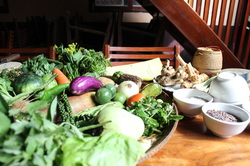 After the particularly disappointing cooking class in Luang Prabang I decided to seek out a class in Vientiane. My first attempt was to find a class which was recommended in Lonely Planet but the business was not where it was listed on the Lonely Planet map (I recently read an article that an author of Lonely Planet Colombia fabricated portions of his book and claimed this was a common practice within the Lonely Planet community so I've since lost a lot of faith in those travel guides). On a day out and about in Vientiane I was walking down a random street and happened upon Lam Paj Baj Tong (no website) which advertised a full day cooking class with market tour and lessons for $50. The price seemed a bit steep but with little else to do in Vientiane and a sincere desire to learn more about Lao cooking I signed up for a lesson the next day. I arrived bright and early for my class - and ended up waiting nearly an hour for the owner/instructor to arrive. When he finally did he apologized for his tardiness then took me to the back area of the restaurant where a plate of vegetables and bowls of herbs and spices sat. I realized then that there would be no market tour though it was advertised on the sign in front of the restaurant. I was the only person in the cooking class that day and so we sat down and began the lesson. The owner Chandra began to explain aspects of Lao cooking to me. He showed me popular ingredients in cooking and talked at length about the importance of rice as well as different herbs. He then began to discuss at length other Asian cuisines and I was disappointed to realize that many of his statements were either only half truths or blatantly incorrect (after living in 2 Asian countries for nearly 4 years and being immersed in a third one in the United States I've had first hand experience with the cuisines of those cultures). I felt these misinformed statements took away from some of the authority he had as a knowledgeable chef. The cooking portion of the lesson was conducted in the restaurant's kitchen - a long and narrow kitchen that is not conducive to cooking classes at all. There was a lot of bumping into one another through this portion of the lesson as we tried to prepare the different dishes on the limited counter space. This portion of the lesson was much more hands on and I got to observe and try to make at least part of each dish. However, the instructor seemed to want to hurry along the lesson and he would prepare large portions of the dish or take over the preparation from me instead of letting me create a food item from start to finish. Once the food was cooked the staff arranged it on dishes and served me in the dining room. The amount of food was tremendous - easily enough for 3-4 people. I ate a bit of each item and then asked for them to box the rest and I continued to eat the food for the next 2 days. At this point the waiter brought my bill and I was a bit disappointed to see that I was still being charged the full $50 for the lesson though the instructor showed up an hour late and the lesson did not include the market tour. Since I am awful with speaking my mind in situations such as these and recognized that I did prepare a substantial amount of food I paid the full amount. I'm sure you wouldn't be surprised to hear that I would rank this lesson a distant 3 behind my Thai cooking experience. The instructor here did a better job of explaining and demonstrating how to prepare the dishes than the instructor of my previous cooking class, he was also more personable. However the $50 fee was a bit steep for a 3 hour cooking class and though I benefited from it with an abundance of food I suspect a class of 3-4 participants would prepare exact same amount of food. More participants and the same amount of food means the value for the dollar would lower. Cambodia Cooking Class  My fourth and final cooking class took place is Phnom Penh. The Cambodia Cooking Class is run by Fizz Restaurant, a restaurant in a somewhat trendy part of the city. The class cost $23 for a full day of lessons. Participants met at Fizz Restaurant from where we departed by tuk tuk to the market. There our guide walked us through the narrow corridors of a vibrant market and explained the different ingredients used in Khmer cooking. After exploring the market we hoped back into the tuk tuks and headed to the outskirts of the city where the cooking class was located. After climbing a couple of flights of stairs we found ourselves in a small apartment. The terrace of the apartment was transformed into an outdoor cooking school and we began our lesson while enjoying a pleasant breeze. We made 4 different dishes during the class. Unlike the class in Thailand we didn't get to pick and choose our dishes - instead the entire class made the same dishes (with variations for me since I was the only vegetarian). For some of the dishes we worked together as a group but for others, specifically the amok we each made our own dish at our work station. This class was extremely informative and enjoyable due in part to the energetic and cheerful instructor. She had a very pleasant demeanor and provided the students with a lot of information. She didn't rush any one through the process and encouraged everyone to get involved when we were cooking together. This class was much more relaxed than my other classes and students were encouraged to enjoy the pleasant afternoon on the terrace. This was by far my favorite cooking class in part because of the instructor but also because I learned how to make amok, a very tasty Khmer dish. Khmer food is much more subtle than Thai food but it still has an interesting mix of ingredients which resulted in tasty dishes. This class also had an enjoyable mix of participants including a couple of American expats, one who lived in Korea, another who lived in Spain a third who was looking to move part time to Thailand.
1 Comment
 It was not by accident that my last stop on my whirlwind south east Asian adventure was Cambodia. I decided to end my trip there for two reasons - 1) I knew my last few days of travel would be the highlight of my trip because I absolutely love Cambodia and 2) since I had already been there once I was going to be able to relax and spend more time visiting a couple of favorite spots as well as a few new ones. Cambodia, a small country nestled between Vietnam, Laos and Thailand is probably best known for the grandeur of Angkor Wat, an architectural marvel, and the heart breaking legacy of the Khmer Rouge, which I saw first hand during my brief stay in Phnom Penh. As with my first visit to Cambodia this trip was woefully too short - how I wish Cambodia had the same lucrative ESL positions as Korea and Japan so I could live in such an intriguing country while also paying down some debt. Since it's unlikely that will ever happen I guess I'll just have to look forward to a return visit sometime in the future. Phnom Penh  Though I had visited Cambodia before my first trip centered around the ruins in and near Siem Reap. I only spent a mere hour or so in Phnom Penh while changing buses. On this trip I decided to visit the small city and so I scheduled 1 1/2 days there. Regretfully this was much too short and the next time I return to Cambodia I will have t o spend a bit longer in the city so I can become more familiar with it. After arriving in Phnom Penh and settling into the hostel my first destination was The Killing Fields, an area outside of the city. The Killing Fields were so named because it was one of the locations where soldiers for the Khmer Rogue killed so-called "enemies of the state" - typically people whose education the government deemed dangerous to its agriculture based society. Below I've posted photos and more information about my visit there. The rest of my time in Phnom Penh was spent walking around, taking a cooking class, observing Khmer memorializing their king who had passed away a few months before and riding in a tuk tuk so I could see different parts of the city. The city itself was dusty and dirty but the people I encountered such as those in the hostel, the cooking instructor and my tuk tuk driver were friendly and warm. The Killing Fields In the mid-1970's the Khmer Rouge, a communist party in Cambodia, took power of the country and tried to force the population into its own skewed concepts of a proletariat paradise - an agricultural society without intellectuals, cities and the arts. The Khmer Rouge emptied the cities and forced people to return to the countryside where they were expected to farm the land and adhere to the strict policies of the controversial government. In an effort to cleanse the population of perceived dangers the Khmer Rogue tried to wipe out intellectuals, people associated with the former government and any foreign governments, immigrants from Vietnam, Thailand and the likes as well religious followers including Buddhist monks and Christians. An estimated 2 million people died during the 4 years the Khmer Rogue were in power which doesn't even take into account the atrocities against women or the children removed from their families never to see them again. There are many killing fields in Cambodia, areas where people were executed and then buried in mass graves. The most famous is near the village of Cheoung Ek outside of Phnom Penh which is where I visited during my most recent trip to Cambodia. The Killing Fields memorial outside of Phnom Penh has a disquieting beauty. From first glance the green landscape, the tall Buddhist stupa, the quiet pond and Cambodia's sunny blue skies give the impression of a local park however instead of the laughter of children one only hears silence except for the occasional murmur of a tour guide explaining the horrific actions that in the not so distant past took place there. Each visitor is given an audio guide to listen to while walking around the memorial. The audio guides are available in a plethora of languages perhaps indicating the diversity of tourists that visit there or maybe because the Cambodia people are desperate for their story to be told in order to prevent the horrors of the Khmer Rogue happening again. The audio guide which leads people through the area details what exactly occurred at the Killing Fields years ago - testimonials from people who had lived through the Khmer Rogue are given. Survivors talk about witnessing executions, women talk about the horrors and shame of being raped and even a former guard speaks about the things he was asked to do or that he saw. During some of my travels I visited sites that are testament to the horror that humans can do to one another. I witnessed the skeletal remains of Jewish prisoners at the concentration camp of Dachau, saw photographs of death and deformities caused by the a-bomb at the Peace Memorial in Hiroshima and met a woman in Vietnam who, as a child, was one of the few survivors of the rape and murder of a dozen women at the hands of soldiers during the Vietnam/American conflict. I had the same emotional and visceral reaction to The Killing Fields as I did to those other locations. However, at The Killing Fields the memories of the terror there literally are coming up out of the ground as it is not uncommon for visitors to come across pieces of human bone along the paths. While the entire memorial is a disheartening ode to the evils of man the sign that was the most disturbing, the place that I suspect most visitors shed a tear was the one pictured below. The tree above was used by soldiers in the Khmer Rogue to beat to death children in order to save bullets. Bracelets were left in memorial of the children. In a spirit house nearby a visitor left a simple origami crane, a symbol of peace in Japan which one can find by the thousands at the Peace Memorial in Hiroshima. And inside that beautiful stupa pictured above? The bones of hundreds of people found buried in the mass graves at the Killing Fields, a tragic reminder of how cruel people can be to one another. Siem Reap  After an emotional albeit too short time in Phnom Penh I woke up early one morning for the long drive to Siem Reap. Compared to the van ride in Thailand this one in Cambodia was positively spacious (it helps when you don't have your backpack on your lap). The van drove along highways and dirt roads and often through small towns giving passengers a glimpse of different sights throughout Cambodia. In the early afternoon, nearly 6 hours after leaving Phnom Penh we pulled into the local stop in Siem Reap and I hopped into a tuk tuk waiting for me and headed to my guesthouse. After a quick meal I headed out to check off a few items on my list of must-dos when I returned to Cambodia. During my four days in Siem Reap I re-visited a few of my favorite temples, spent part of the day in the countryside learning about the life of rural Khmer, enjoyed a dance performance which was based on the ancient dance form of apsara, pampered myself with a couple of spa treatments and visited a silk farm where I learned the exorbitant amount of time and effort it takes to make something as simple as a scarf. Beyond Siem Reap 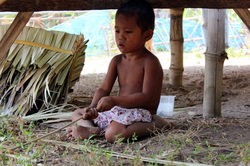 During my first visit to Cambodia I had the opportunity to visit Kompong Khleang, a remote rural village where foreigners are a rarity. I still remember the smiles and shouts of the local children who came out to see my travel partner and me. That experience remains one of my most memorable from all of my travels. On this visit to Siem Reap I was interested in another experience away from the tourist saturated temple ruins. While flipping through a guidebook for the area I happened upon an ad for Beyond. Unique Escapes, a tour company that organizes socially responsible trips. After a brief visit to their office I decided on their country side tour where participants would learn about the lives of the average rural Khmer and take part in some type of volunteer work. The goal of the volunteer work was to assist a type 1 family - a family with no consistent source of income nor without any savings, one which typically struggles to eat daily. Early the next morning I joined 3 other travelers and 2 guides and we drove outside of Siem Reap until all we saw were rice paddies and homes constructed of thatch. When the van finally stopped we hopped out then got into carts pulled by bullocks for a brief tour of the area. Our assigned work for the day was to weave thatched panels for a family home. Homes made of thatch need to be re-done every few years because the building materials begin to deteriorate from the elements. The process can be lengthy - first the leaves must be collected, dried, then soaked in the pond before being dried again in the sun and then family members begin to weave the panels. However, it was slightly more difficult for this family because the mother had recently given birth and she was busy caring for her new born baby. After a brief tutorial we began to weave our panels which proved to be slightly difficult due to the stiff nature of the material and the dullness of the makeshift needle. It was an interesting experience but sadly quite short - we only wove the panels for an hour before a brief tour of the nearby rice paddies while the guide told us more about the daily lives of the local people. After returning to our starting point the guide showed us how to make a couple of local dishes, one of which was a type of steamed salad with red ants as a main ingredient. We sat down in a clearing and enjoyed lunch before bidding farewell to the family we were there to assist and walked back to the central point of the village which had a small temple and school. Altogether it was a good experience and worth the $30 dollar fee (part of the money went to the family as well as a village fund) though I wish we had been able to spend more time helping the family or getting to know them. I realize it was most likely awkward for the women to have strangers at your home who didn't speak your language and were privileged simply because of the countries in which they were born so I understand the limited interactions. However, I do believe we could have woven more panels since the tour ended a few hours earlier than scheduled. The Temples of the Khmer Empire 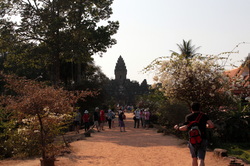 The biggest draw to Cambodia are the plethora of ancient temples which are scattered around the city of Siem Reap. The most famous is Angkor Wat, a temple which is nearly a millennium old and is the largest Hindu temple in the world. However, Angkor Wat is not the only temple in the area worth visiting - Bayon boasts dozens of carved faces of a Khmer king, Banteay Srei delights visitors with its beautiful red sandstone while Ta Prohm highlights the balance between nature and the temples. Upon my return to Siem Reap I decided to visit a selection of my favorite temples - The Roulous Temples, Banteay Srei, Ta Prohm, Bayon and ultimately Angkor Wat. This experience was a bit different from my previous visit - in June of 2009 there were minimal tourists at the sites and I even managed to explore the Roulous temples in solitary. However, February seems to be a popular time for tour groups from far east Asian countries and I had a vastly different experience this time around amongst the hundreds of other tourists all clamoring for the same photo op. I guess an upside of the increased number of tourists is that the hawkers outside the temples concentrated more on the tour groups than the individual travelers so for the most part I could get into and out of the temples without receiving the hard sell to buy some small trinket. Though I had to fight the crowds to see the temples I still marveled at the incredible architecture and detail of the Khmer temples and below are a few photos from my visit.  After a wonderful week in Thailand I boarded a plane for a short flight over to the country of Laos. I didn't know a lot about Laos before I went except that it was supposed to be a beautiful country with a strong Buddhist tradition. My first impressions of the country after I left the airport was that it was much less developed than even the other countries I had visited so far. Laos is a small country in south east Asia which, like its neighbors China and Vietnam, is a communist country. It's most likely the country in which is least familiar with Westerners - Malaysia has Kuala Lumpur, Thailand is well known for its food, Cambodia has Angkor Wat while Vietnam is renown (sadly) for its war. Laos has none of those things and therefore is a bit more low key. This isn't to say it's off the tourist circuit - it is well known amongst back packers in south east Asia and was surprisingly incredibly easy around which to travel. It just means that Laos isn't over developed with Western stores, restaurants, etc and the tourists keep mainly to specific areas which include the historic city of Luang Prabang and the capital, Vientiane. Luang Prabang  My introduction to Laos was through the town of Luang Prabang. Once the capital of the Kingdom of Laos (before it became a communist nation) Luang Prabang is a UNESCO world heritage. Luang Prabang was probably the most enchanting place I visited during my trip. The series of French colonial buildings in the downtown had been converted into restaurants or guest houses. Lazy rivers bordered both sides of the main part of town and locals and tourists strolled along the shaded streets. Flashes of saffron robes were common sights as monks strode between temples. Once you leave town you encounter a countryside which is rich and green and abundant with sprawling farms and natural beauty. While in Luang Prabang I enjoyed an elephant ride through a woodsy area, a boat ride down the Mekong, a cooking class, a walk through a wooded area with a towering waterfall and visits to a variety of temples. However, the highlight of my trip there was a daily ritual performed by Buddhist monks which I'll talk about below. Tak Bat Early one morning in Luang Prabang I climbed out of bed while the night was still dark, showered and quickly dressed before heading out in the dark streets of the town. Though Laos is quite warm throughout the day the mornings are chilly and for the first time since leaving Korea I put on my fleece. While walking to the center of town I encountered groups of tourists also scurrying about alongside locals. Eventually the locals, mostly women, sat down next to the road, unpacking the containers they had with them and began to prepare for a daily ritual. Laos, like most south east Asian countries has a strong Buddhist heritage. Beautiful Buddhist temples and monks clad in their saffron colored robes are a common sight in Laos. The giving of alms is an ancient tradition in south east Asia. Monks leave their temples early in the morning and walk around town during which devotees offer them sticky rice (monks are not supposed to buy food but eat what is provided them by the faithful). I saw this ritual early one morning in Thailand and again in Cambodia. However, unlike those countries where the monks go about in small groups the daily alms ritual in Luang Prabang is a ceremony which involves hundreds of monks. The ceremony begins at dawn when the monks, in meditative silence, begin to file out of the temple and accept the offerings from devotees. The ritual has a series of unspoken rules which are guided by Buddhist beliefs and social norms. Devotees are to sit or kneel while giving alms, which typically consists of sticky rice. Women and men should be dressed respectfully - legs and shoulders should be covered. However, with the influx of tourists these unwritten rules were frequently violated and now many restaurants and guesthouses post them for foreigners. These rules were expanded to request that tourists not take flash photos because it disturbs the monks and if they are not offering alms to stay across the street. Sadly, most foreigners don't heed the rules and while I took photos from afar with my camera and telephoto lens I watched other tourists stand in front of the monks snapping pictures and otherwise creating a spectacle. It was disheartening to see a centuries old tradition ruined because some tourists are too self-absorbed to think of anything else but getting a great photo. From what I've heard and read locals have contemplated ending the tradition because it is no longer a religious ritual but a tourist photo opportunity. The arrogant and ignorant tourists aside it was an interesting ritual to observe. As the monks quietly walk by I realized the sheer quantity of monks in the area (hundreds) and the vast age difference (from 60's-70's to children of 10 or so). I sat across a woman who patiently waited for the monks to arrive and then remained, kneeling, during the entire ritual carefully handing out sticky rice to each monk (many other devotees did not have enough food for all the monks and left before the procession concluded). Not far from this woman sat a young child who sat quietly, his hands pressed together in reverence with a small basket in front of him - a few monks removed rice from their containers and placed it in his basket - it was then that I realized he was there to receive food from the monks and probably was quite poor. Vientiane 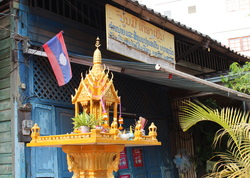 In retrospect the city of Vientiane, Laos' capital and my next stop after Luang Prabang, was a place I could've skipped - or at least only spent a day or so there. Though the capital of the country the city has a very underwhelming rundown feel with little to see or do. Unfortunately I had scheduled 5 days there because I hoped to do use it as a base for a tour in the surrounding area. However, while walking around I realized that unlike Luang Prabang there aren't many tours from Vientiane. I realized by the end of the first day that 5 days in Vientiane would be a waste but as luck would have it I woke up the next morning feeling quite sick - a high fever, muscle aches and chills and so I spent a day and a half in bed resting.The remaining time in Vientiane was spent trying to find something to do until my flight to Cambodia a few days later. This is the downside of planning a trip ahead of time with plane tickets and hotel rooms paid before hand. However, it's how I prefer to travel when out and about by myself so I don't really regret the decision. The lack of things to do was also partially my own fault because I didn't completely read up on the city in my guidebook and I missed the opportunity to visit a silk farm where disadvantaged women are taught how to weave silk.
Throughout my few days in Vientiante I spent my time wandering around the town, enjoying a variety of food (though small it does have a decent number of international restaurants), peeking into different temples and trying to avoid the rain. Though at times I feel like I wasted too much time there I do think that with less to do I was able to recharge myself a bit before the whirlwind final week of my trip. 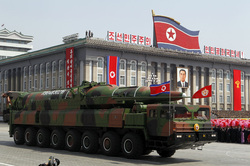 If you have access to virtually any form of media - newspapers, the internet, TV, etc - so in other words you literally don't live in a cave - then you've heard the recent rhetoric coming out of North Korea directed towards South Korea and the U.S.A. I was hoping to get my blog current with entries on the remaining two weeks of my vacation, graduation and new classes before addressing this issue but it seems like it simply isn't possible. The new school year has kept me incredibly busy - so much so that I might only get one or two nights a week when I'm not up to midnight working on lessons ... but I digress.
I imagine the threats from North Korea can be a bit frightening if you're hearing them via Western news sources since they've made it sound like the peninsula is on the brink of war and it's only a matter of days before Seoul will be be a ring of fire and the NORK troops will be marching across the DMZ. What the news outlets are downplaying is the general attitude of the people on the peninsula itself. Life goes on as normal here in Korea because this bellicose rhetoric plays itself out every few years. When I lived in Japan 10 years ago Kim Jong Eun's father screamed and shouted for attention after a successful co-hosting of the World Cup by Korea and Japan. His rants ended with the NORK bombing of small cluster of islands off of South Korea. However, little was made of that occurrence on the larger international scale - perhaps because by that time the US embroiled in a war in Iraq. While I understand the concern people have expressed because CNN and all other news sources make it seem like war will literally break out any moment let me reassure you - the people who live with the dark cloud of the North constantly hanging over their heads aren't all that worried. Maybe it's because North Korea has proven that it's like a screaming child that throws tantrums to get what it wants (at the moment that's the attention of the US president and international aid) or maybe because after 50 years of living on a peninsula divided by war they know that there's no use obsessing over a war that might or might not happen and therefore they go about their daily business. This isn't to say the country isn't prepared - Korea has compulsory military service for all healthy young men and therefore has a large military. It also has the support of 30,000 US military troops and as the US demonstrated a few weeks ago the capabilities of flying B-52 bombers (which can carry nuclear weapons) from the US to Korea in a relatively short amount of time. However, Koreans aren't obsessing over a possible war like the American media because this situation has played itself out may times before. Life in Korea goes on as normal - there are no military tanks going down the street or armed soldiers on street corners (in contrast to when I visited Pattani, Thailand in January where I witnessed both due to instances of civil unrest). In fact I think Americans would be shocked to hear that North Korea is rarely discussed amongst my Korean co-workers. Last year when Kim Jong Il died it barely created a murmur in the office. The only teacher who has mentioned North Korea to me has asked a few times about American evacuation plans but says that he and other Koreans aren't really worried. Personally, I think he just wants some sort of reaction - akin to the time he tried to make an oncoming snow storm of 1, maybe 2 inches out to be some type of snow-maggedeon and kept asking me what I would do if the buses stopped running. He seemed put off by my logical answer that I'd just take a taxi. I don't think he was necessarily worried about me or even about the storm - he just wanted me to be worried about it. It is difficult to ignore the fear-mongering put forth by the media and naturally this issue does cross my mind occasionally. Last week I contacted my brothers - both who serve in the US military and asked them to get in touch with anyone who was stationed in Korea, curious to hear what a soldier stationed here might say. Kelly got back to me and said according to his friend the US army isn't on any type of alert and it is business as usual. Which for now is how life is here in South Korea - business as usual. 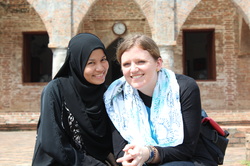 My Malaysian adventure ended with a short flight from Kuala Lumpur to the southern Thai city of Hat Yai. Thailand is a country which I doubt I need to really introduce - it's probably the most well known country in south east Asia because of its incredibly popular food, beautiful architecture and friendly people. Once the plane I was on touched down I began the surprisingly easy journey from there to the town of Pattani. I had expected this portion of my trip to be a bit more difficult since this part of southern Thailand isn't exactly known for being a tourist destination and therefore fewer people speak English. However, my friends had given me wonderful advice and I easily transitioned from the airport to the bus station via taxi and from there in a van full of university students to Pattani where I traveled to for a mini reunion with fellow BSU students. I split my time in Thailand between Pattani in the south and Chiang Mai in the north - this permitted me to see two distinctly different aspects of Thai culture - the Malay Muslim influenced culture of the south and the Buddhist centered culture of the north. Pattani  Approximately 2 1/2 years ago I met a trio of Thai students through my job at the Rinker Center for International Programs at BSU. We saw each other at different events and two of them even presented on Thailand at the Culture Exchange series that I coordinated for the department. Over time we got to know each other better and they joined the occasional international dinners at my apartment, we had dinner together at the local Thai restaurant and before they left they cooked a delicious Thai meal for myself and a few other RCIP employees. After they returned to Thailand we kept in touch through messages and posts on facebook. When I moved to Korea I knew it would only be time before I visited Thailand - and last January I found myself in a hot crowded van on the way Pattani to see them. Below is a photo with me, Mareekee, Arseeya and Nurhakeema (and her daughter). Pattani was the biggest detour from the typical tourist circuit of South East Asia during my trip. Not many tourists make it to this part of Thailand. The area boasts a large ethnic Malay Muslim population in contrast to the rest of Thailand which is predominantly Buddhist. The state of Pattani is unfortunately a bit infamous in Thailand and abroad due to civil unrest that manifests itself in the occasional bombings (the most recent was approximately 5 months before my visit). If I understood my friends correctly the radicals who set off the bombs do so because they want the state of Pattani to be part of Malaysia with which the population shares more in common including language, culture and religion. My friends showed me around a bit - taking me to a local mosque, an old Chinese mosque, a local night market and a popular barbecue restaurant. In between those trips I explored Pattani on my own or hung out with them enjoying a mountain of fresh fruit at the local English school that Nurhakeema and her husband own and at which Mareekee and Arseeya work. Pattani doesn't have a lot of designated points of interest but it is a decent sized town and so each day I would wander around. Since it is an unlikely tourist destination I discovered when I walked around town that I created quite a stir - people stopped to stare at me, a falang (foreigner) and children chased after me to yell 'hello'. Chiang Mai 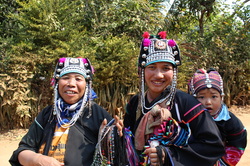 While I was sad to leave my friends behind in Pattani I was incredibly excited for the next stop on my journey - the beautiful city of Chiang Mai. Located in the northern part of Thailand the city is hailed as a cultural center for Thailand with a plethora of restaurants (Thai and foreign), glittering Buddhist temples on each block, extensive night markets, local elephant training camps and settlements of hillside tribes. Northern Thailand was exactly what one might expect of the country - sunny blue skies with lovely 80 degree weather, saffron robed monks walking along the streets and extravagant temples nearly everywhere. What I hadn't expected was the images of Ganesha (a Hindu god) I found throughout the city - whether outside of Buddhist temples positioned next to a statue of a Buddha or on a poster hanging on the wall of a business. My last morning in Chiang Mai I made my way to the small Hindu temple in the city where I spoke briefly with the Indian priest who told me that many of the regular devotees were in fact Thais themselves. The Karyan, Akha and Others In addition to exploring temples I also took a day trip outside of town to meet some of the ethnic hilltribes including women of the well-known Karyan long neck tribe. Though the trip itself was a bit superficial at times with the guide herding us out of and into the van for brief encounters with people from the different ethnic groups, some of whom pressured us heavily to buy their goods, it did give me brief opportunities to speak with, albeit limited by language differences, some of the women. Those short chats were one of the highlights of my overall trip. |
| Mindy in the City |
|




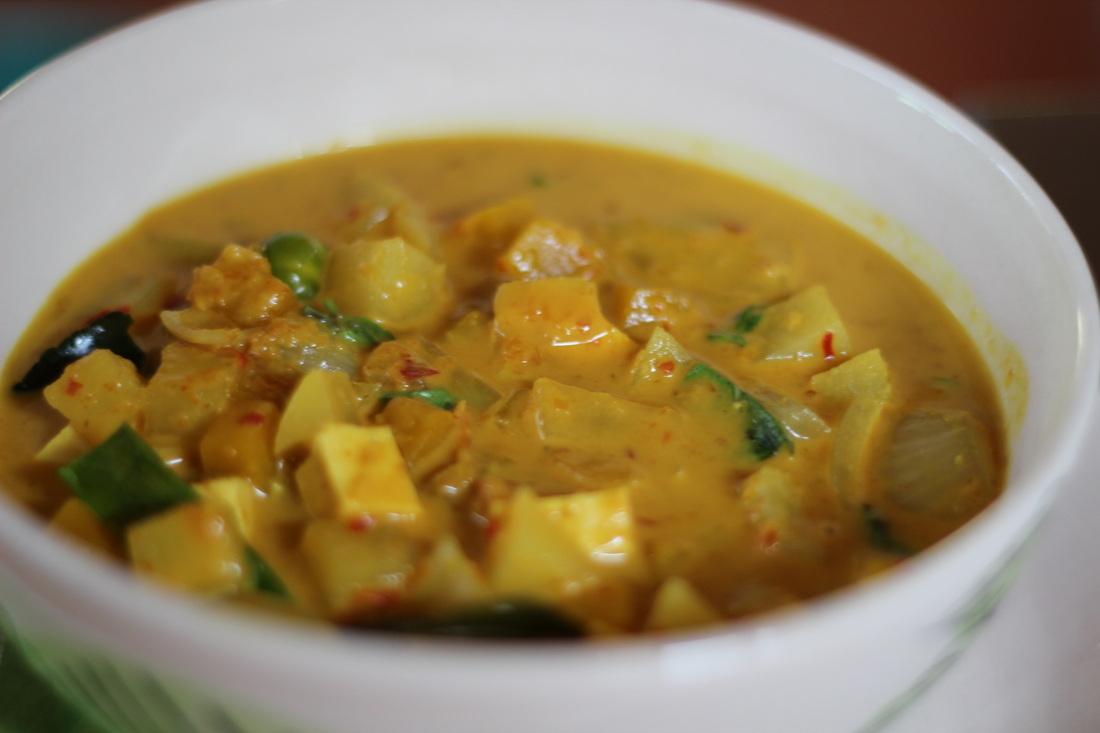






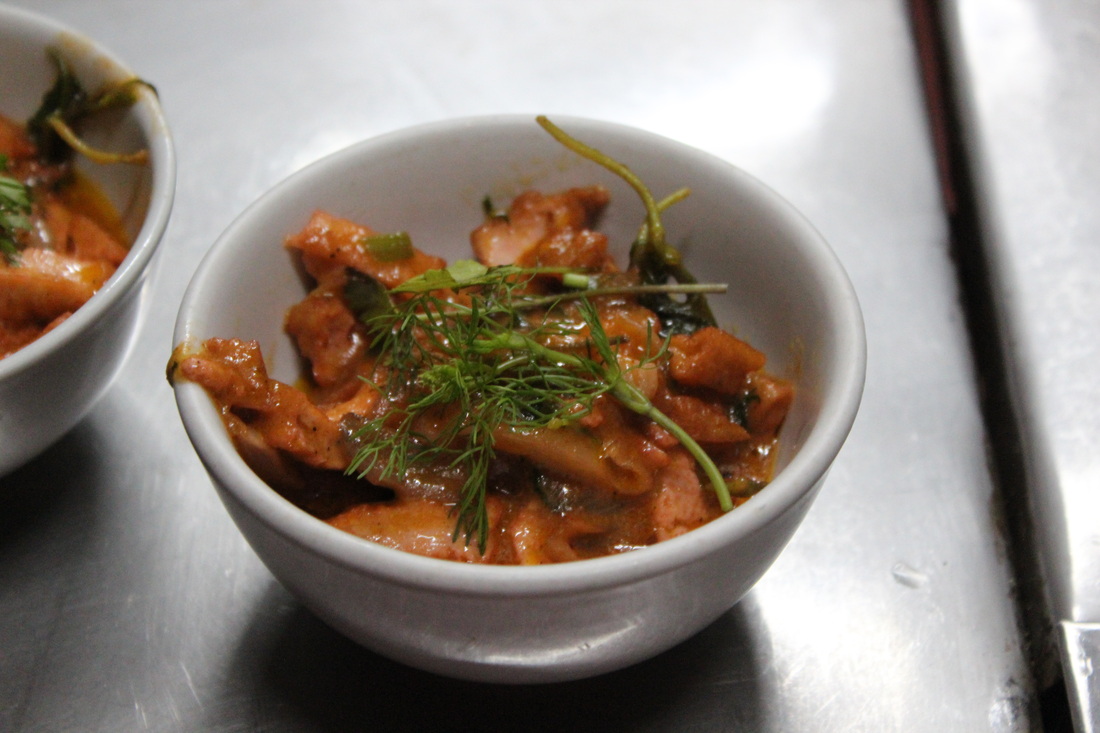
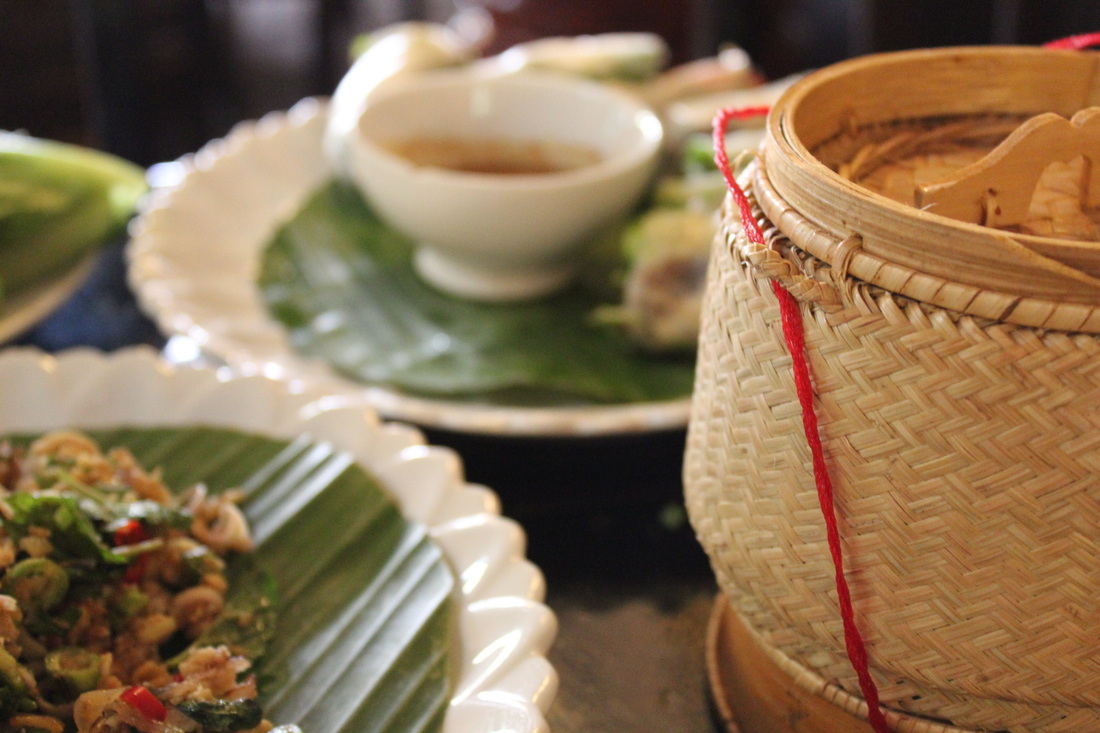



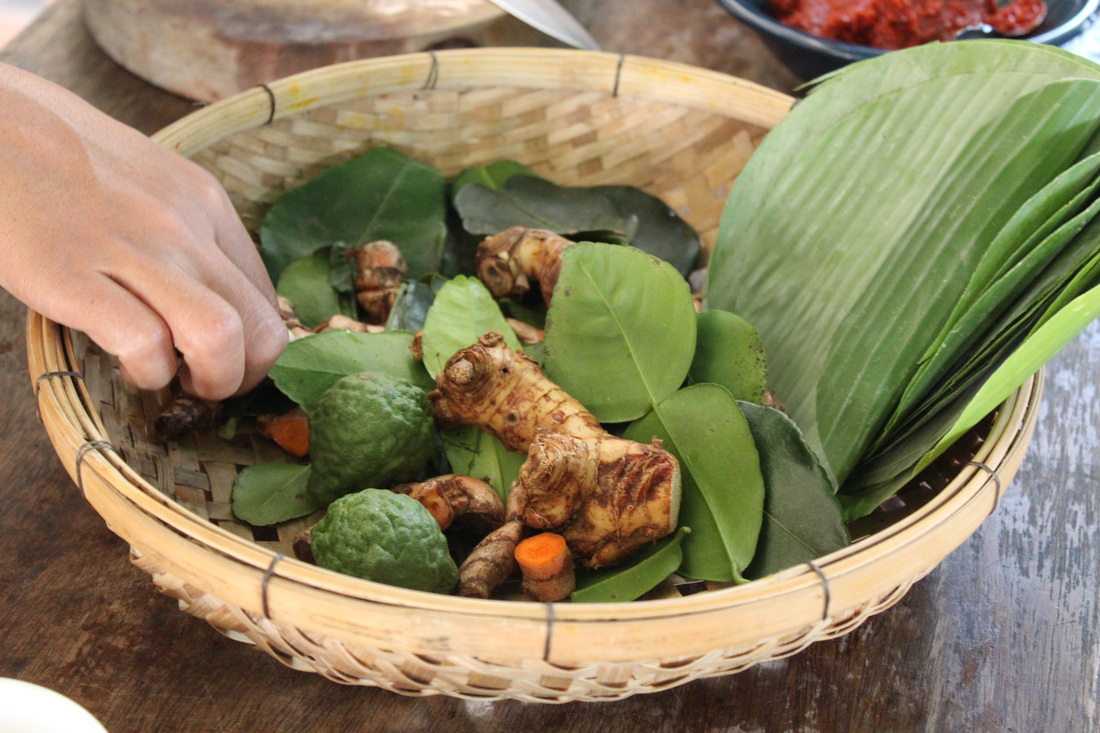






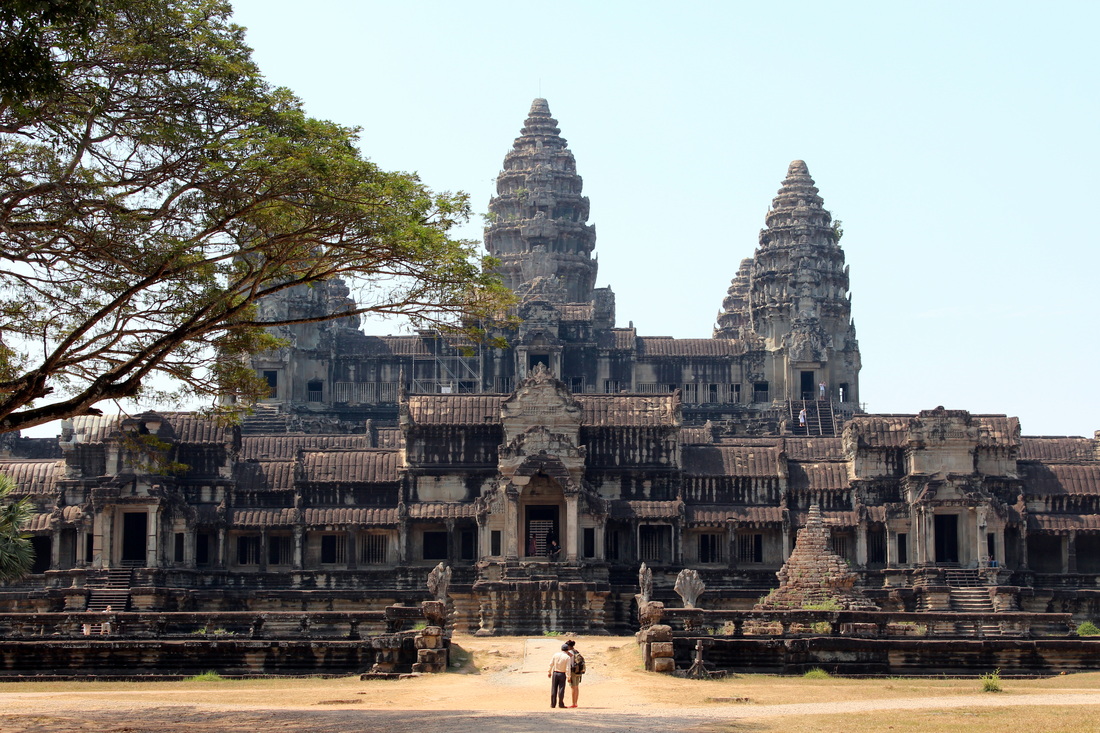



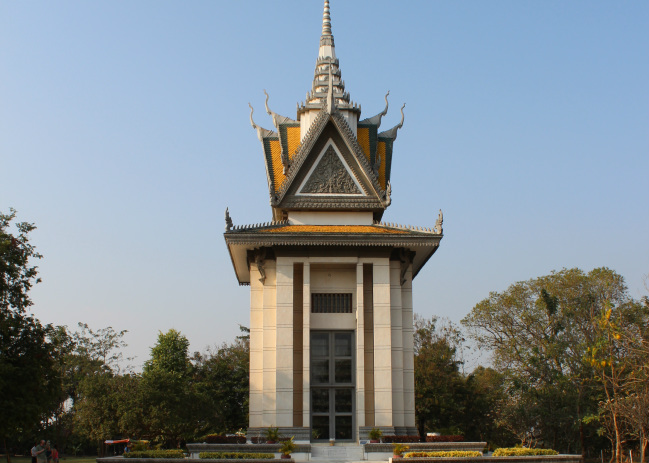













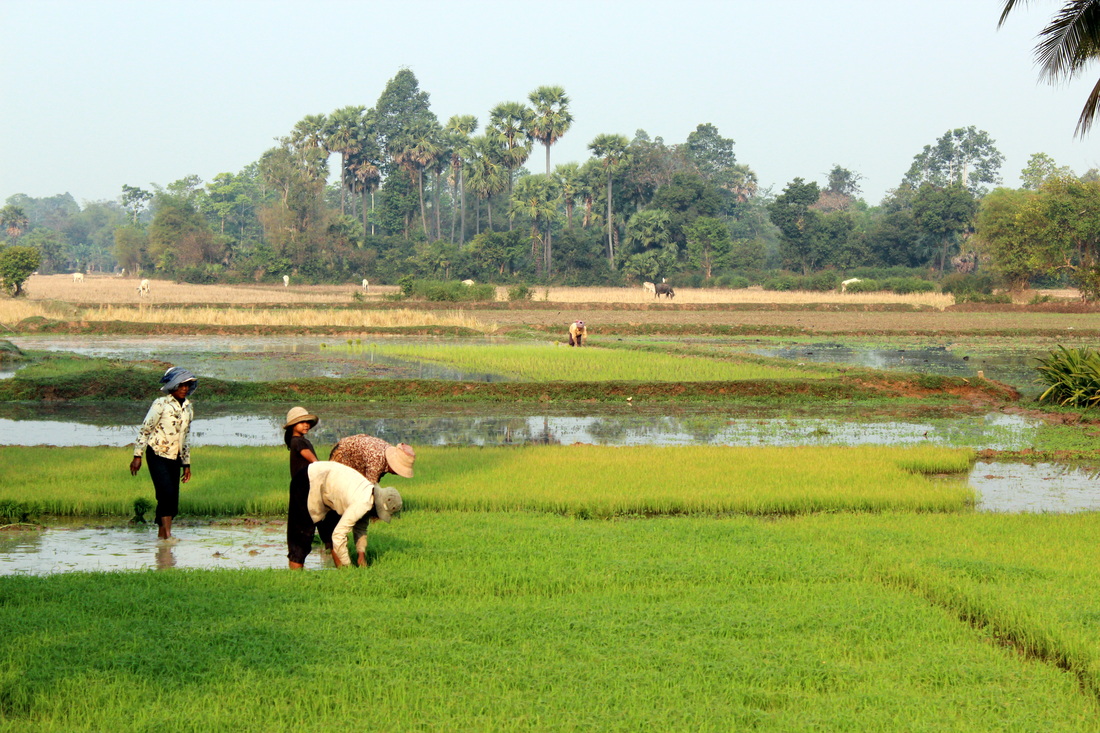












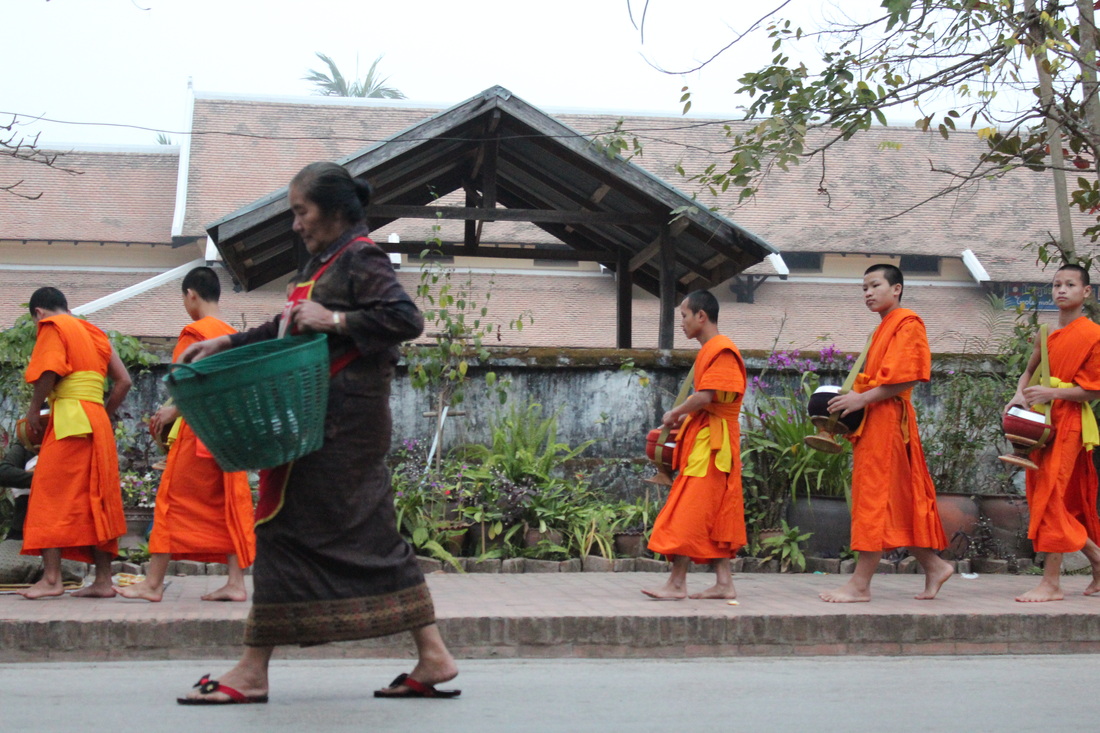






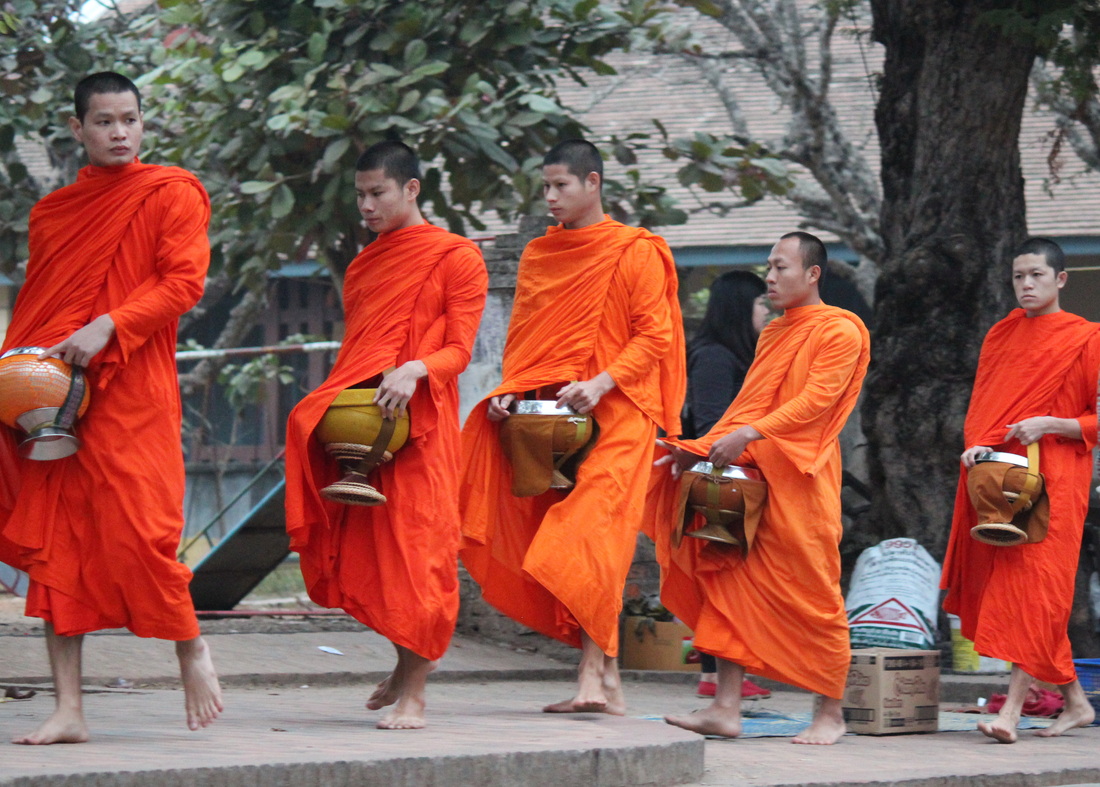



































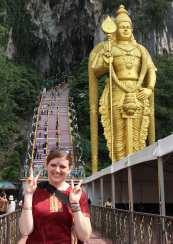
 RSS Feed
RSS Feed